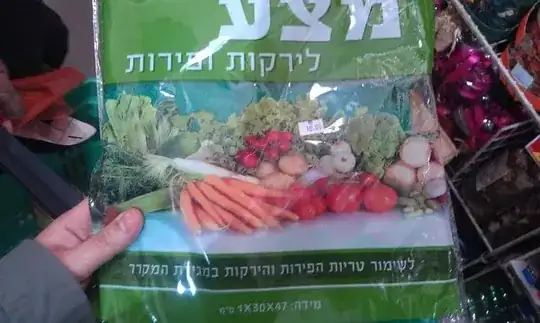This sponge is meant to be put into refridgerator's vegetables compartment at the bottom and said to keep vegetables fresh:

Sorry, the package is in hebrew, but is this true? How can it keep vegetables fresh?
This sponge is meant to be put into refridgerator's vegetables compartment at the bottom and said to keep vegetables fresh:

Sorry, the package is in hebrew, but is this true? How can it keep vegetables fresh?
I have seen two sorts: a polymer felt-type pad and a natural clay version sandwiched between synthetic fabric. Both are meant to regulate humidity. Soak up excess moisture and expire it back as needed.
Both claim to be anti-microbial in design. The clay, I suspect, is near in structure to montmorillonite which is micro-crystalline; actually bursts bacteria! The synthetic would be engineered to discourage growth of mold such as some sport socks do.
Neither need to touch veggies directly to function. Potatoes, I would place directly as I peel them anyway. Bamboo washcloth can be dampened and used as a cover over delicate greens similarly -bamboo is naturally anti-microbial.
Without a translation of the Hebrew text, I cannot be sure what this particular product is intended to do -- but, as certain vegetables will last longer in the fridge if they are kept in a low-humidity environment, I would expect that a dry sponge would be used to absorb excess moisture to keep it away from the vegetables. How effective it is, well, I can't find any scientific articles one way or another.
Assuming typical sponges were good at dehumidifying, however, I would be worried about it becoming a bacterial reservoir touching the food. In response to some of the comments, bacteria does not need much food to survive, just water. Legionella sp., for example, is a bacteria that does very well in air conditioning units and public fountains, causing repeated outbreaks of legionellosis until the source of the contaminating bacteria is remediated. Vibrio cholera is another that can survive well in water, and can be transmitted purely through exposure to contaminated water, even if the water does not contain any significant concentrations of "food".
And, of course, there's the simple "yuck" factor of an old, soggy, and eventually mildewed sponge. Yet one more reason to eat your veggies while they are fresh.